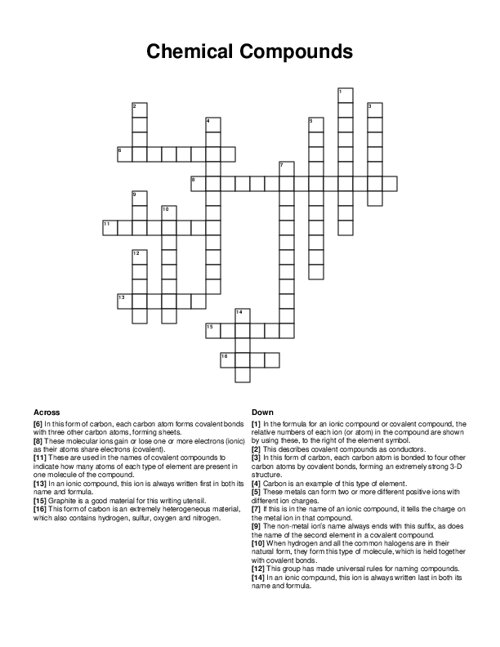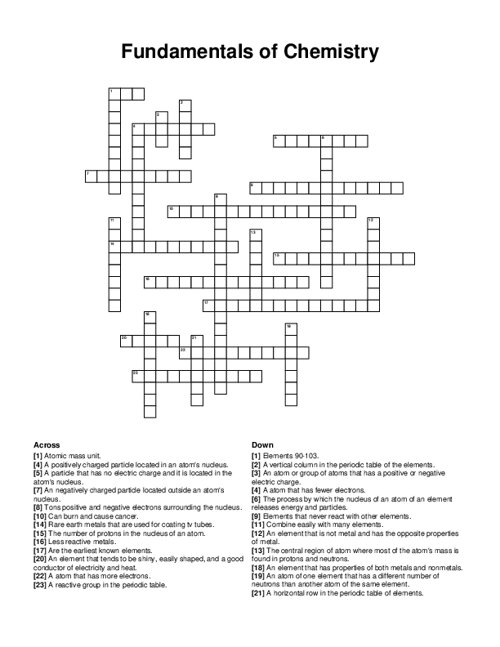Chemical Compounds Crossword Puzzle
Download and print this Chemical Compounds crossword puzzle.
Related puzzles:
QUESTIONS LIST:
- poor : this describes covalent compounds as conductors.
- polyatomic ions : these molecular ions gain or lose one or more electrons (ionic) as their atoms share electrons (covalent).
- iupac : this group has made universal rules for naming compounds.
- cation : in an ionic compound, this ion is always written first in both its name and formula.
- anion : in an ionic compound, this ion is always written last in both its name and formula.
- ide : the non-metal ion’s name always ends with this suffix, as does the name of the second element in a covalent compound.
- subscripts : in the formula for an ionic compound or covalent compound, the relative numbers of each ion (or atom) in the compound are shown by using these, to the right of the element symbol.
- multivalent : these metals can form two or more different positive ions with different ion charges.
- roman numeral : if this is in the name of an ionic compound, it tells the charge on the metal ion in that compound.
- prefixes : these are used in the names of covalent compounds to indicate how many atoms of each type of element are present in one molecule of the compound.
- diatomic : when hydrogen and all the common halogens are in their natural form, they form this type of molecule, which is held together with covalent bonds.
- network solid : carbon is an example of this type of element.
- diamond : in this form of carbon, each carbon atom is bonded to four other carbon atoms by covalent bonds, forming an extremely strong 3-d structure.
- graphite : in this form of carbon, each carbon atom forms covalent bonds with three other carbon atoms, forming sheets.
- pencil : graphite is a good material for this writing utensil.
- coal : this form of carbon is an extremely heterogeneous material, which also contains hydrogen, sulfur, oxygen and nitrogen.





